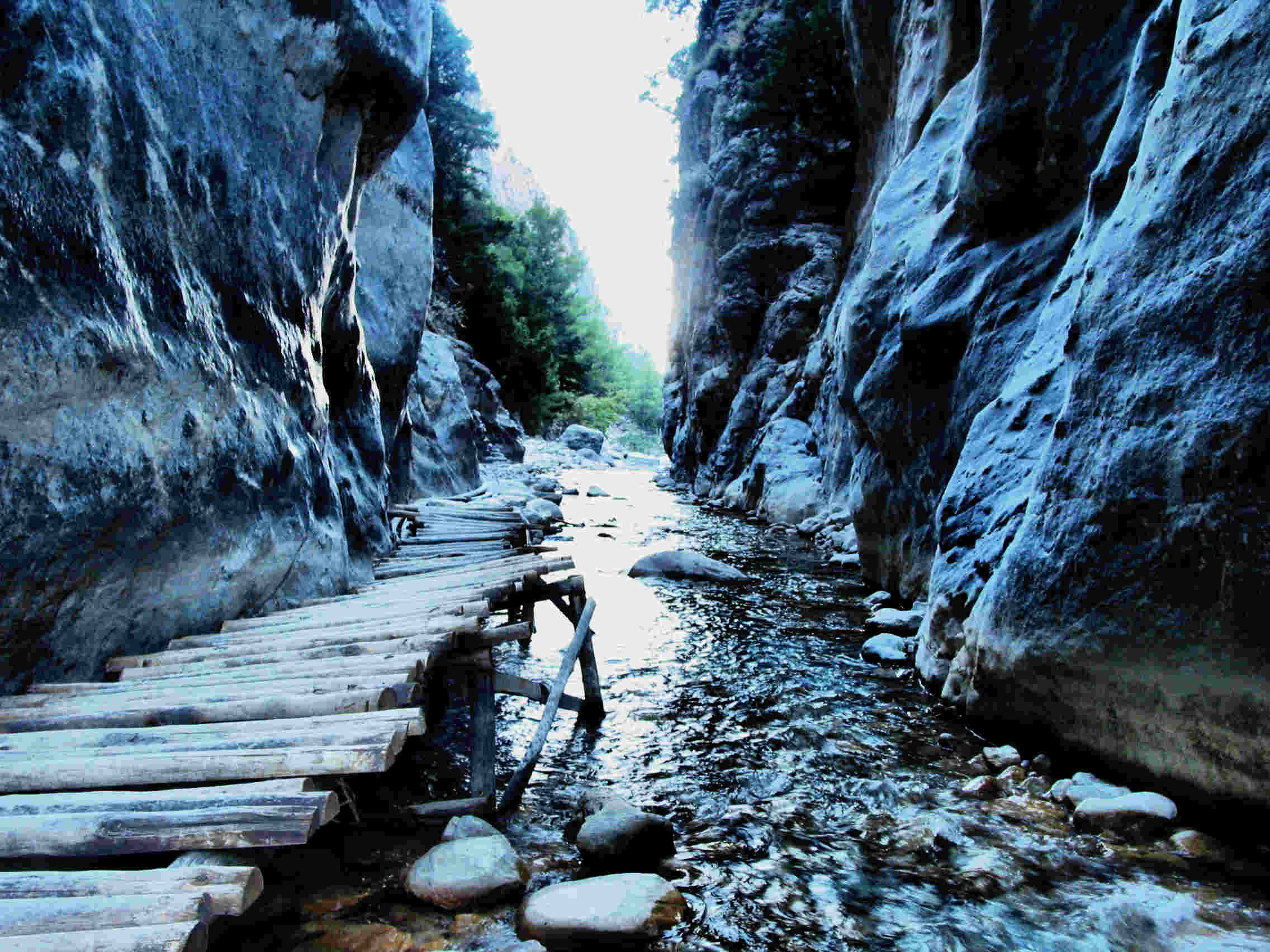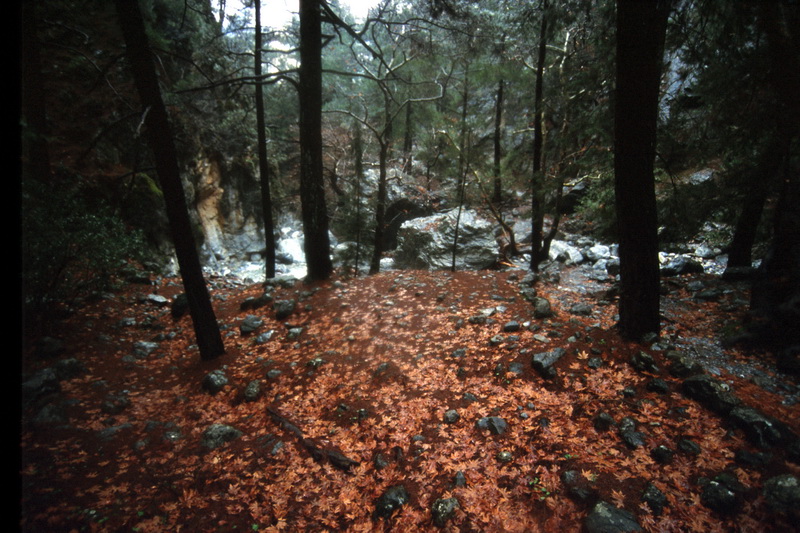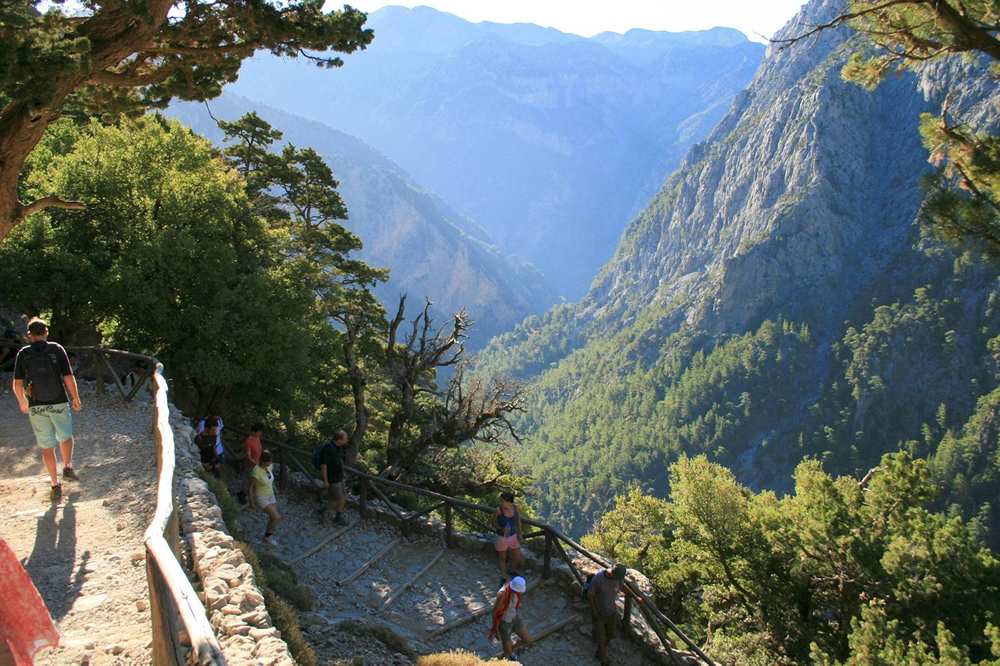"There is just Samaria Gorge, the rest of them are mere canyons" – this is what the locals say about this special gorge, which was declared a National Park in 1962. The gorge starts from the position Xyloskalo on the south side of the plateau of Omalos and descends the south side of Leuka Oroi (=White Mountains). It is 18 km long and a descent takes about eight hours.
The landscape continuously changes: mountains, aquatic vegetation in the river, streams, springs, Cretan sage, Origanum Dictamnus, and wild goats on the edge of steep cliffs. You will be lucky if you see some kri-kri, the native type of wild goat that has been living for centuries in the mountains of Crete and is slowly becoming a species under extinction. The deepest point in the canyon is 600 meters while the top of Gigilos is 2000 meters high. The narrowest passage is "Portes" (=Doors). You will find it just before exiting the gorge and it is just 3 meters wide.
According to mythology, Samaria gorge was created by a Cretan Titan who stabbed Earth. Another legend has it that on top of Gigilos, opposite Xyloskalo, there was the throne of Zeus and below it there was a cave named Demonospilia (=Cave of the Demons). The cave took its name by the particularity of the territory; there are piles of stones everywhere and the groundwater creates a mysterious atmosphere and a muffled hum. The oracle of Apollo was also located here. Just further down, at the location of Agathoti, there was a big plateau called “Pedio tou Dia” (=the Field of Zeus) and based on the ancient Greek mythology, Zeus used to go there on his chariot. A beautiful river runs through the gorge, making it impossible to descend when the tides are high. In ancient times it was called Tarraios from the town Tara near Aghia Roumeli village. The ancient city of Tara was very important in the Hellenistic period as it was connected to Lissos, Elyros, Yrtakina and Pikilassos. The temple in the gorge was built in the 1st century B.C. and was dedicated to Goddess Artemis. In 1415 it was converted into a church dedicated to Saint Nicholas. Also, there is still the Byzantine church of Saint Maria and the village inside the gorge is named after the church. The village was inhabited until 1962 when the gorge was declared a National Park.
Aghia Roumeli, is the place to stop when you leave the gorge. After swimming in the crystal clear waters of Agia Roumeli, you will enjoy traditional food cooked with local ingredients at the taverns of the area. The famous pies of Sfakia are a delicacy you should not miss. Wear closed shoes, light clothing and bring some water and food with you. Enjoy the beauty of the landscape while walking in this spectacular gorge!





